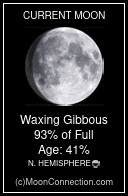Located amongst the stunning landscapes of northern Arizona, Wupatki National Monument gives you a glimpse back in time. This remarkable archaeological site is home to ancient Puebloan ruins and excellent petroglyphs. It’s a place where the stories of the Ancestral Puebloans—who thrived there from 500 A.D. to 1225 A.D.—come alive, offering a glimpse into a rich and vibrant culture that has shaped this region for centuries.
Imagine settling into a community around 500 A.D., surrounded by the rugged beauty of Arizona. The Ancestral Puebloans did just that, creating a thriving society in the Wupatki area. The highlight of the monument is undoubtedly the Wupatki Pueblo itself—a sprawling structure that housed around 100 people. With over 100 rooms, a central plaza, and even a ball court, it shows how much effort they put into their dwellings and the settlement as a whole.
- Wupatki Pueblo: The centerpiece of the monument, showcasing stunning architecture.
- Lomaki Pueblo: A charming smaller ruin with about 40 rooms and a kiva, offering a more intimate glimpse into Puebloan life.
- The Citadel: Perched on a high mesa, this lookout spot reveals how the Puebloans defended their community.
- Box Canyon Dwelling: This unique multi-story structure in a narrow canyon adds a fascinating dimension to your visit.
Wupatki also has many petroglyphs and pictographs, ancient artworks etched into the rock that tell stories of daily life and spiritual beliefs. They include depictions of animals, human figures, and intriguing geometric shapes, and other works that serve as a marker that there was an thriving community there in historic times.
Visiting the ancient settlement gives insight into pre-European contact history and is a bit like a journey through those times. As you wander the trails, informative signs share the history and significance of the ruins. Don’t forget to stop by the visitor center—it’s packed with fascinating exhibits providing more information and context for the history of the settlements , a store, and even ranger-led programs that dive deeper into the history. A few hours is usually enough to soak in the highlights, but if you’re eager to hike and explore more, definitely stay for a few days.
Wupatki isn’t just about beautiful ruins; it’s a vital link to understanding the Ancestral Puebloans and a bit about their way of life. Their incredible architecture that aided in their adaptability to the harsh desert environment are remarkable. The monument also provides a little insight into the cultural exchanges between different indigenous tribes back then, like the Hopi and Zuni.
So, what happened to the settlements? While the exact reasons for the abandonment of Wupatki remain a mystery, several factors likely played a role. A period of drought, depletion of resources, and conflicts may have driven the Puebloans to move on.
Wupatki National Monument - More History
Lead Interpretation Ranger, Lauren Carter, discusses how visitors can experience the extensive history of Wuptaki National Monument.





